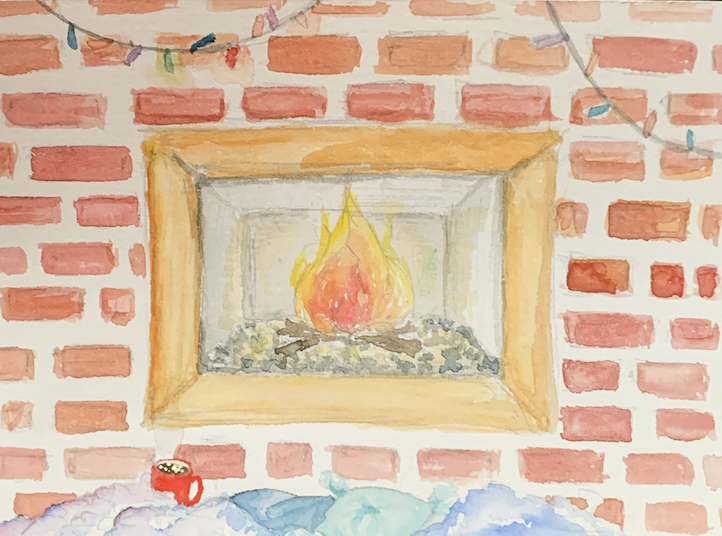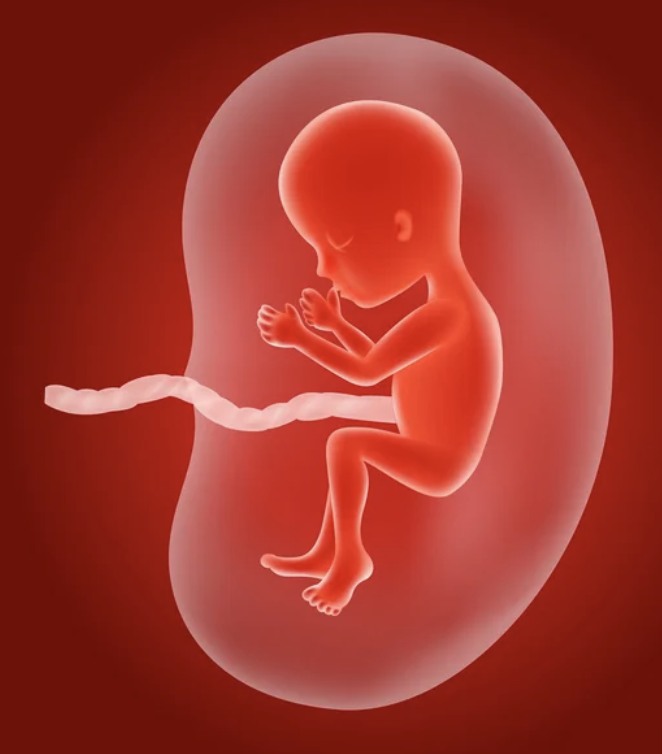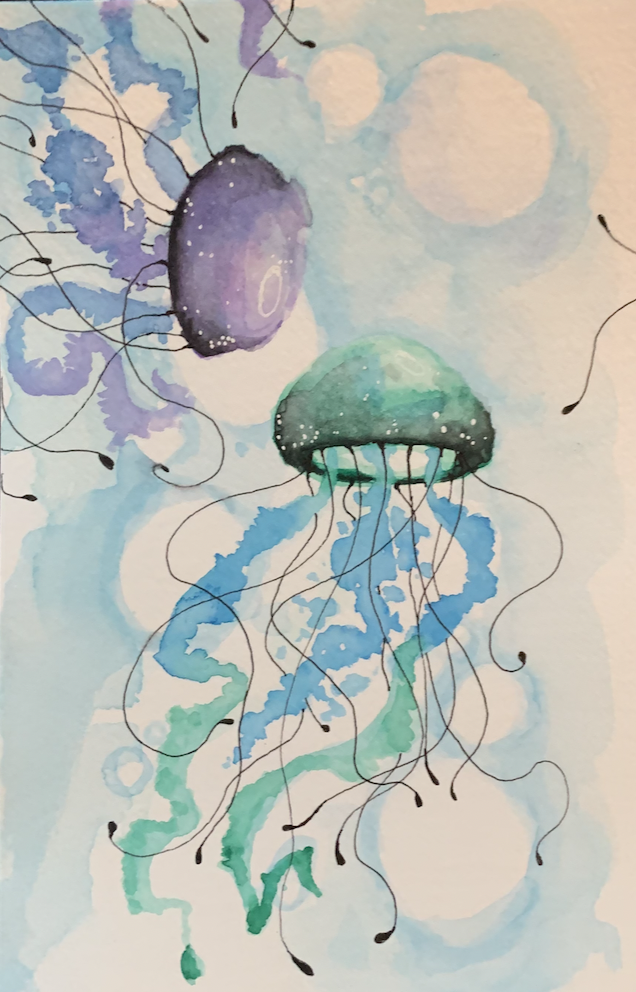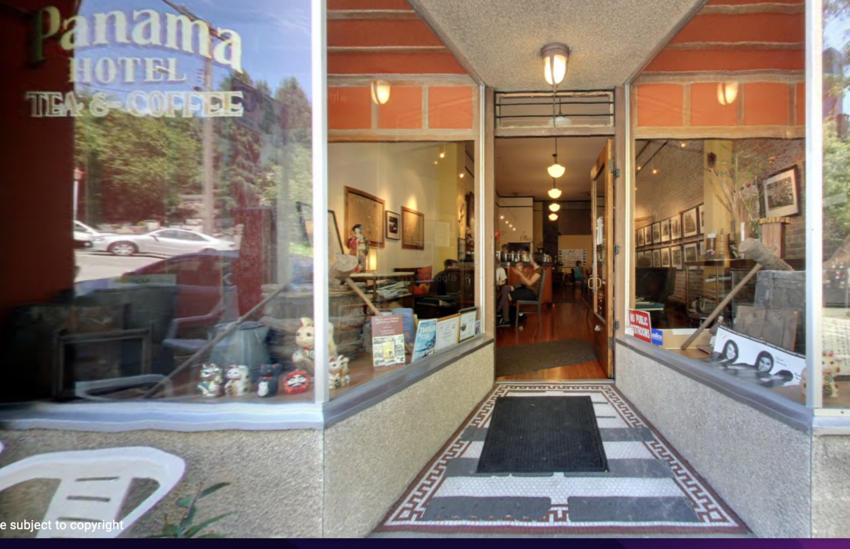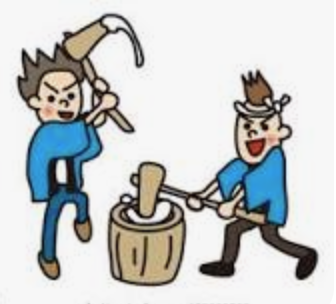 Grandpa Kay stood near the bowl and turned the rice in between poundings and was never injured.
Grandpa Kay stood near the bowl and turned the rice in between poundings and was never injured.
“Agatta! Agatta!” (Went up!) Grandpa Kay shouted into the brisk December morning air, the week before Christmas. That meant, the steam had risen to the top of the stack of five wooden boxes holding water soaked “mochi rice” on bamboo mats, above a concrete and metal firebox. Each box was 15 inch squares, 6 inches high.
At least two young men - Uncle Frank, friend George, or cousin Joe, who were in the basement kitchen of our ONTARIO MARKET grocery store having coffee and smoking after a 7am breakfast, ran up the concrete stairs, out to the back yard, lifted the top four boxes while grandpa took out the bottom box with the hot steamed, ready to pound, mochi rice.
Grandpa Kay then dumped the 4 or 5 cups of mochi rice into the water soaked “bowl”, dug out of an almost table-high 20 inch tree stump. The same young men grabbed home-made, hatchet sized, wooden mallets. They began a rhythm of taking turns pounding and smashing the rice as Grandpa reached in between strokes and turned the mass for evenness. Some of the elders, standing around, often broke into song, “Yo, Yo” to keep the pace even. As the mass of rice became a sticky ball, the older ladies prepared a long table covered with dry rice powder, in the room next to the kitchen. Grandpa ran in and dumped the big ball of mochi on to the head of the table.
Grandma Tanaka or Grandma Kobayashi, with nice calloused farmer hands, stood at the head of the table and squeezed off cookie sized pieces of hot-hot-sticky rice. Four or five young women, my mom’s age with aprons, took the balls, flattened each ball, gathering in the edges so there was a nice rounded attractive appearance and set them on trays. There was lots of gossip and talking going on, “Alice, when it comes time, just take deep breaths and push real hard at the end.” “Did you hear that Tom and Betty are getting married?” “Tosh is captain and the Notus High School basketball team is going to state in Boise.”
It was then, us young kid’s turn to take these pieces of mochi and lay them on shelves of long wooden 2 by 4s, on the far side of the room, to dry. Four or five-year-old cousin Don got the most praise, “See how Donald is arranging them so neatly? Donald, you’re going to be successful when you grow up!”
At the end of the day, some of the mochi pieces were wrapped around sweetened, smashed Azuki bean balls and given to us kids as a treat. But the best treat, the next few days, was Mochi heated so it puffed up. Then we dipped these puff balls into sugar and soy sauce, ummmm!
The week before New Years was the busiest time for the ONTARIO MARKET and mochi was one of the most important items. Us kids, growing up in the ‘40s, ‘50s & ‘60s, helped put the dried mochi pieces into bags for sale. My dad was part of the grocery delivery to the outlying farmers, the dozens of Japanese farmers in our Treasure Valley community on the border of Western Idaho and Eastern Oregon. A bag of mochi was part of each order.
“Mochi” means “to hold”; holding on to prosperity is symbolized with ‘OZONI” (boiled), mochi with vegetables soup. It is important to have an odd number of ingredients and never four, which means death. Most of us with Japanese Heritage, who maintain some of the traditions, never miss having mochi on New Years Eve or New Years Day.
 CUISINE WITHOUT BORDERS
CUISINE WITHOUT BORDERS
As I blogged yesterday, 1939 was another year that January had a Friday the 13th and my being born on January 14th seemed like another synchronicity for Sam and my being together. Today is my 84th birthday and it is again a year of the rabbit like the year I was born. It is said that I might be associated with luck, longevity, peace and prosperity.
Last week Kelly asked, “Where do you want to go to celebrate your birthday?”
I remembered that our friend, Sam Takahashi, had announced the opening of his new restaurant when we met at garden party, last summer, held by the Japanese Consul General. I emailed him to ask the name of his place and he wrote back: “84 Yesler at 84 Yesler Way.”
I explained to the girls that my Sam and I have known Sam and his wife Kitty (Katsuko) for 50 years. We have a “Kintsugi plate” (gold repaired antique dish) displayed on our living room shelf that we bought from him when he managed the Mariko Tada Japanese Antique store on Fifth Avenue Seattle between Pike and Union. We had gone to their wedding in West Seattle.
This morning started at 6:50am. I drove Kirin, in the darkness and rain, to catch a ride to her high school Drill Team competition in Redmond, WA today. The Mercer Island High School Drill Team planned to go to the Red Robin Restaurant for dinner, but Mom Kelly said, “Grandma’s birthday is special,” and talked Kirin into joining us instead.
By daylight time, it turned out to be a beautiful sunny day. So Mom, Kaori and Grandma decided a birthday breakfast and a walk on Alki beach with dog Suki was the best way to begin our celebration of someone born in the lucky year of the rabbit. Then we hurried to get to Redmond, WA to watch the various schools in the greater Seattle area perform their routines. The ceremony and Drill Down lasted longer than we expected so we didn’t have time to go home and dress up for our evening reservation. Kirin was in her drill team outfit and had dramatic make-up. Kaori was in a Christmas decorated gray sweat shirt and I was in pants and a t-shirt. We decided it was more important to get to our reservation on time.
Getting to the restaurant in the Pioneer District of Seattle, we were surprised to be greeted at the door rather dramatically by Michael, the Maitre D, “Welcome, we were expecting you, I understand it’s your birthday.” We were being treated like VIP?
Mom Kelly was somewhat vocal in expressing our embarrassment in dress, but exchanged comments about how we knew the owner and had gone to his wedding. As we began to look at the impressive menu and ordering, it all of a sudden occurred to us that we were at 84 Yesler and this was my 84th birthday.
Shortly, we were further surprised by Sam and Kitty with an unexpected personal appearance with flowers and a letter with the picture of their wedding with Sam and me in the background - confirming that we had been to their August 4, 1973, wedding in their friend’s West Seattle back yard with a view of Puget Sound.
It’s bedtime now and raining again, but what a memorable and beautiful day it has been. We are commenting, "There is no other restaurant we would be able to duplicate what Chef Christina creates." Our fifteen-yr-old is happy she chose to came to celebrate Grandma’s birthday instead of a Red Robin hamburger with her friends; but those of you who live with teenagers know that turning down friend activities for a family dinner is not a simple choice. The food choiceS were unique and delicious!
 CELEBRATING THIS SPECIAL DAY
CELEBRATING THIS SPECIAL DAY
These are the years "Friday the 13th" fall in the month of January: 1905, 1911, 1922, 1928, 1933, 1939, 1950, 1956, 1961, 1967, 1978, 1984, 1989, 1995;
21st-century: 2006, 2012, 2017, 2023, 2034, 2040, 2045, 2051, 2062, 2068, 2073, 2079, 2090, 2096
Is it just a coincidence that Sam Goto was born on a "Friday the 13th" in 1933 and the next time "Friday the 13th" occurring in January was the year Dee Goto was born on January 14th, 1939??
The year Sam and I started dating, the Seattle phone book had calendars dating back several years. This one evening in 1960, I was studying for an exam for a U of WA Public Health Nursing degree. I was with Sam at his dental lab in the Seattle Medical Dental Building. He said, "I was born on a 'Friday the 13th', so I looked up the possible Friday the 13th birthdates.
Of course, that convinced us that we were meant to be together and celebrated in 1961 when "Friday the 13th" fell again in January of that year and my birthday was next to his on January 14th.
Sam left us five years ago, but here we are in 2023 when the January combination has occurred again. This evidently happens every year that starts on a Sunday.
I'm having lunch with friend Elaine. I have chosen to celebrate by meeting her at the Original House of Pancake that moved to the Town Center in Redmond. Sam and I used to go there often for Dutch Baby Pancakes when it was in Kirkland.
Tomorrow is my 84th birthday. Kelly has made reservations at 84 Yesler. Sam Takahashi's newest endeavor is this new place "with no cultural borders" in Seattle's pioneer district. Sam Goto first met Sam Takahashi when he ran the Mariko Tada antique store in the Medical Dental building years ago. We attended Sam and Katsuko's wedding in West Seattle.
A lot of history and a lot of fun memories to celebrate!!
![HAPPY NEW YEAR 2023 - A K...]() HAPPY NEW YEAR 2023 - A KAORI WATERCOLOR
HAPPY NEW YEAR 2023 - A KAORI WATERCOLOR
Our household holds a 13-yr-old and a 15-year-old this New Year’s Eve, going into NEW YEAR 2023. The girls are at the mall and ice skating. I’m listening to a Wayne Dyer video and he gave me the idea for the title because the girls were struggling with cleaning their room and daily chores before they left.
Dyer is one of my favorite lecturers and today he is talking again about describing the REAL SELF inside each of us. He says, “I am the same me that I remember as a teenager and now with a bald head, I am the same me.” Funny, because I went to the bathroom, combed my hair, and the comb is full of hair!
I went to fill my thermo cup with some more tea and someone left a note on the fridge: THE BAD NEWS IS TIME FLIES; THE GOOD NEWS IS THAT WE ARE THE PILOT! I’m using people like Dyer to teach me to confirm that I know how to fly, and continue to learn more.
Dyer goes on to suggest the thinking of our life like a clock - Twelve is our real self. As one’s clock moves to six, We move away from self. Some of us stay here and die. The key is to move forward, back to twelve and enlightenment - with loving, accepting, moving toward a no limit life. The clock doesn’t tic backwards. Dyer explains his five secrets of the universe and getting back to twelve:
1.Quality rather than appearances - get to not needing approval - success is “being busy being myself”. Busy following my dreams, to not notice if anyone approves.
2.Ethics rather than rules - seeking the truth - seeing things as they are not as I want them to be.
3. Knowledge rather than Achievement - knowledge rather than awards and goals - trusting my inner sense and living in the present. He says JFK just did, each day, what made the most sense. What a relief to not make any more New Year resolutions.
4. Personal Authority rather than being an Authoritarian - never needing to dominate someone else - listening to what other people have to say. Know myself. When someone treats me badly, that’s their Karma. How I react is my Karma.
5. Serenity instead of Acquisitions - serenity comes from the way I think - living in the light - learning forgiveness and being love.
Suki, our Berniedoodle, “lives in the present”: wants to be be fed, let out to pee, poop, exercise, and cuddled with love! Her mission in life is to let us know when strangers come up our driveway. She doesn’t bark with the garbage truck, the Fed-Ex truck or the UPS trucks. But if the UPS just delivers to our neighbor across the street, she barks to see if he will come over and bring her his usual treat. She just jumped up beside me to cuddle because she is worried about the New Year celebration noises.
THERE IS NO WAY TO HAPPINESS: HAPPINESS IS THE WAY TO HAPPY 2023!
![CELEBRATING 2022 AS WE MO...]() CELEBRATING 2022 AS WE MOVE INTO 2023
CELEBRATING 2022 AS WE MOVE INTO 2023
Right now, there is a big FED-EX truck stuck in our driveway. He was turning around and got his right back truck wheel “high centered”, so it spins and has no traction. He eventually called a tow truck to pull him out of his dilemma.
The tow truck looks considerably smaller than the big Fed-Ex truck, but got the job done.
The truck is no longer blocking so, Grandma and Kaori are on their way to an Orthodontic checkup. Earlier, they had discussed what Kaori would like to watercolor for Grandma’s blog this week. Kaori had answered, “I like the fireworks celebrating New Year, but maybe the celebration can also be of the best parts of this past year.”
Turning left on to West Mercer Way, Grandma explained, “Maybe I’ll write about Fed-Ex truck and think about the ‘Tow-Trucks’ in our life.
Kaori was enthusiastic, “I like that!”
“So what are some of the Tow-Trucks we can celebrate?”
Kaori answers from the back seat of the Subaru, “Community! Of course family, and yes, friends.
“Let’s start with you, what was the best part of 2022 for you?” Grandma asks as we turn right at the corner with all the special holiday lighting in Mercerdale Park. “There is no doubt the watercolors you got for your birthday in June is your highlight?”
“I was kind of thinking of our Hawaii trip, but yes AND all the pencils and watercolor stuff for Christmas,” Kaori adds.
Back at home, Kirin has no trouble responding to what she plans to celebrate, “High School and Drill Team. I like the discipline, I get a lot of exercise and I love the camaraderie!” Mercer Island Drill Team got first place in their local tournament a couple weeks ago. They are determined to win state.
Mom, Kelly, lost several pounds on her Keto Diet with her coach, but she’s not ready to celebrate because she is not done yet.
Grandma is pleased to celebrate the monthly random guests, since May, participating in the STORIES AT THE PANAMA. Listening to many podcasts about “finding and expressing the truth - of who I am”, she heard and embraces the phrase “FINDING THE RICHNESS OF LIFE IN EVERY STORY”. What a mission statement for her new life path.
There was a smile on his face, as the Fed-Ex driver hollered out his window to the Tow-truck driver as they were leaving,“That was ‘POWERFUL HELP’, thanks!!”
![ANOTHER KAORI WATERCOLOR]() ANOTHER KAORI WATERCOLOR
ANOTHER KAORI WATERCOLOR
Yesterday was a snowy day. Kaori (13) and I talked about what I might blog about our thoughts and she wanted to think about the good feelings with a warm fire in our living room.
Kelly has been sitting in front of this warmth all month as she taps out, on her computer, the right words for the book she is putting together about her Dad, his philosophy and art with his 250 cartoon strips he completed before he died five years ago. Starting in 2012, Dad Sam’s weekly cartoon strips were published by the North American Post for five years.
December reminds us of the 2017 month of illness Sam endured producing his last cartoon strip for January and passing on December 31st. As the family gathered that day, sister Irene noted, “Sam was born on the 13th and today is the 31st, thirteen backwards!”
In 1971, when Sam and I took our first trip to Japan, we had to quickly get our visas and went to the City of Seattle Vital Statistics office to get Sam’s birth certificate. That’s when he officially learned he was born on January, 13, 1933, at 3am, on Friday the 13th, at 1303 Washington Street in Seattle, was the 3rd child of a mother 23 and a father 33 and their address was Route 3 in Renton.
Publisher Bruce Rutledge, of Chin Press, was here yesterday for lunch and he likes the idea of the title of our book being, THE WAY OF SAM, which might resonate more with all who seek truth and being American. The North American Post comic strips were titled SEATTLE TOMODACHI.
School is out, no homework, the girls and Suki the dog are filling our home with music, lights and love for the season.
![Gift of family]() Gift of family
Gift of family
As I was hiding Christmas gifts for the girls this 2022 holiday season, I found this story Grandpa Sam had written on the shelf of his writings and drawings in my closet. It is representative of the gift of life and the gift of family.
UMBILICAL CORD TEA
By Sam Goto
I was eight-years-old and living in Bully Creek, Oregon. We lived in a house Dad built on to an old chicken coop. This was before WWII – no electricity, no plumbing, an outside privy; but I have many memories of the place.
One memory is the time I was going through Mom’s medicine box. It contained Japanese herbal cures like “gorin” (small BB size silver pellets), a piece of brown root that had a medicinal odor that was shaved for tea.
The thing that interested me most was a dried up piece of something, light brown, wrapped in cellophane that looked like dried up cuttlefish. I remember asking Mom about it and she said: “It is your UMBILICAL CORD, saved especially for you. If you ever get real sick, we can make tea out of it and it will make you well!”
I never saw it after that or ever needed it. Maybe there was something to it. Stem cells are now being studied by scientists – Stem Cells?
Umbilical cord traditions in Japan:
In Japanese culture, many believe that the umbilical cord directly impacts the baby's health. So, when a mother gives birth in Japan, the hospital will usually give her a special box to preserve the cord after it falls from the baby's belly button.
![SOURCE?]() SOURCE?
SOURCE?
According to Sudhguru, “connecting with source” starts with appreciating colors, wearing natural product created clothes, noticing sunrises and sunsets, being passionate with nature and exuberant about living.
Love is described as transitional sweetness of emotion. If my body become pleasant, I can call it good health. If my mind becomes pleasant, I can call it peace and or pleasure and further feel joy, blissfulness, ecstasy!
So today, as I am taking time to empty the dishwasher and clean the Kitchen sink, I am taking more time to appreciate the pleasantness of moments. It makes me feel good to see a clear kitchen counter ready for the next round of cooking and eating.
I come back to my room and it feels good to see a made bed, but some of yesterday’s socks are under the rebounder. I toss them into my laundry basket, then I take out the waste basket to be emptied into the garbage can outside. The sun is mid-day in the sky, there are a few clouds. How glorious to feel the cool November air.
Getting in the car to drive the 13-yr-old to Karate practice, I am explaining my feelings to her because I am asking her to do another watercolor to illustrate this blog.
I’m writing it all down and imagining how readers can be feeling their own joyful moments?
Neuroscientist at Stanford, Andrew Huberman, explains this thinking as “dopamine releasing” moments. Dr. Rahu Jandial, surgeon and neuroscientist, suggest we pay more attention to our breathing.
Growing up in the fundamental Christian home I agreed to be baptized at age six. I remember the other girl around age 10 went on and on about how she was transformed. At that time I thought, “Nothing changed for me?” I prayed as I walked to school. I still have the same habits of thinking-praying, but it’s becoming more fun. “SOURCE”? Hmmmm? Lots to learn!
![BECOMING AWARE OF MEANING...]() BECOMING AWARE OF MEANINGFUL COINCIDENCES
BECOMING AWARE OF MEANINGFUL COINCIDENCES
Being involved in things that make life better, being a grandma, making my bed, getting at least 5000 steps on my Fitbit, making healthy diet choices, living in harmony with nature and continuing to learn fills my days. When I awaken and I have thoughts and ideas, I work to follow my instincts.
Today, I decided to google a podcast on “synchronicity” and found Phillip Merry PhD who wrote 9 KEYS OF SYNCHRONICITY - They’re Hiding All Around Us. The first 3 first keys, “Notice something different that is happening to one’s day. Become aware. Then act on it.”
Merry's 4th key is to celebrate and the following is a fun example in my life:
On one of my trips to Japan in 1991, I was staying in Chiba, not far from where I landed at Japan’s Narita Airport. A few days later, I had a business appointment in Roppongi, one of the eastern districts of Tokyo. My host asked me to wait in his office while he ran to a 30-minute-errand and then he would take me to lunch.
I felt I was not far from Den-en-Chofu and decided to call Mrs. Nihei while I waited. I had gotten to know the Nihei family here when they lived on Mercer Island for a few years as business reps for a Japanese company. Mrs Nihei was not home, but her son Tats answered the phone saying, “Mrs Goto! How wonderful to talk with you. I actually live in Kobe, but I dropped by the house because I made the trip today to make some wedding plans. I would love to get together, but I have to go back to Kobe.”
I responded, “Tats, I’m planning to go stay with my cousin in Kobe next week. Let’s plan to get together there.” Then, I gave Tats my cousin’s name, Harumi Sumitomo and address.
Tats screamed back in response, “HARUMI! Mrs. Goto, I am a representative of the Sumitomo Bank in Kobe and just last week, I went to their home on business and met them for the first time!!”
Following Merry’s second set of suggests I’m putting my awareness into being a servant citizen. Therefore, I’m using my blog to keep me thinking, set intentions and integrating my heart/brain.
I asked my 13-yr-old to watercolor a visual that I can include with my thoughts of living with hope and possibility. I have my next blog planned with Merry’s 9th Key of “Connecting With Source”.
![BETWEEN 6TH AND MAYNARD ...]() BETWEEN 6TH AND MAYNARD ON MAIN STREET
BETWEEN 6TH AND MAYNARD ON MAIN STREET
IN SEATTLE'S INTERNATIONAL DISTRICT
Spring of 2022, Nana and I started meeting at the Panama Hotel Tea and Coffee on Tuesdays to discuss Seattle Japanese Immigrant stories and writing. The place was always humming with a variety of activity with Seattle City Tours, school field trips and those who come to see the real HOTEL ON THE CORNER OF BITTER AND SWEET by Jamie Ford. Of particular interest are features such as the belongings stored downstairs because of the WWII incarceration of those of us with Japanese Heritage. In general the rooms are filled with pictures, artifacts, vintage decor and documentation of the Japanese Experience in America!
It’s of significance to me because my father-in-law, Nisaburo Goto, once considered the Hashidate Japanese Bath in the Panama basement and the NP Hotel next door “Home”. There is a picture of him working as a bar tender at the Jackson Cafe hanging on the wall.
One Tuesday, Jan, the owner sat down with us to visit, and it flashed in my mind, “Why don’t we start a session of Stories at the Panama.” Jan got excited and commented, “Sunday is our slow day for the Tea and Coffee business.” It occurred to me, Sunday was also a day we could park free on the streets. We decided the first Sunday of each month between the hours of 11am to 1pm would be a good commitment. My granddaughter drew and made the flyers. Jan posted a sign on the entry door.
May 1st, 2022, was our first session and we had a dozen individuals join us to chat. One couple was from Australia, others were from North Carolina, Japan, New York and all over. The visitors did come from all corners of the world and it was fun to ask questions like, “Where did you grow up? Why and when did you come to Seattle? What is the story of your heritage?”
Sunday, November 6th was our seventh monthly session with another dozen of us or more. Cassidy was from England via Portland and was staying at the Panama Hotel to see a couple of the comedians in Bell Town. She had a Japanese boy friend inspiring her to learn more about Japan and Japanese.
Reed, a world traveler - having grown up in California - was with us with his girl friend, Emily, from Taiwan. She is at the U of W and enrolled in their Entrepreneurial Program. It was fun to hear her explain her life path and how her parents fell in love in Okinawa.
Jim and Karen met taking Japanese class at the U of W. Subsequently, they learned both their fathers were part of Boeing’s Space Program. Karen saw the Stories at the Panama sign on the front door and they also came to check out Jim’s, Mukai grandmother’s Koto - musical instrument, that is displayed in the entry window showcase. Karen also shared some about her family heritage from the coal mines of Pennsylvania.
Eric told us about his first job as an engineer at Boeing and his experience in selling the first Boeing 737s to Japan’s Nippon Airlines. He explained that it helped to have Japanese heritage, but having grown up in Kona, HI, he had to learn the Japanese way of doing business. He commented, “Most of the decision making was ‘getting to know each other like family’ and after business hours endeavors.”
The Panama Hotel Tea and Coffee is a gathering place and international crossroads of visitors of every age. Current business owners as well as former residents, of what was once considered Japan Town, come for coffee and lunch breaks. Several of us choose the location for business meetings.
Those of us interested in history, psychology and philosophy are finding it a lot of fun to share our own heritage and life stories as well as hearing from all walks of life. Stories can change how we think, change behaviors and add fulfillment for well being. Nothing like talking, asking questions, sharing and being inspired!
- If you are a bloguru member, please login.
Login
- If you are not a bloguru member, you may request a free account here:
Request Account







